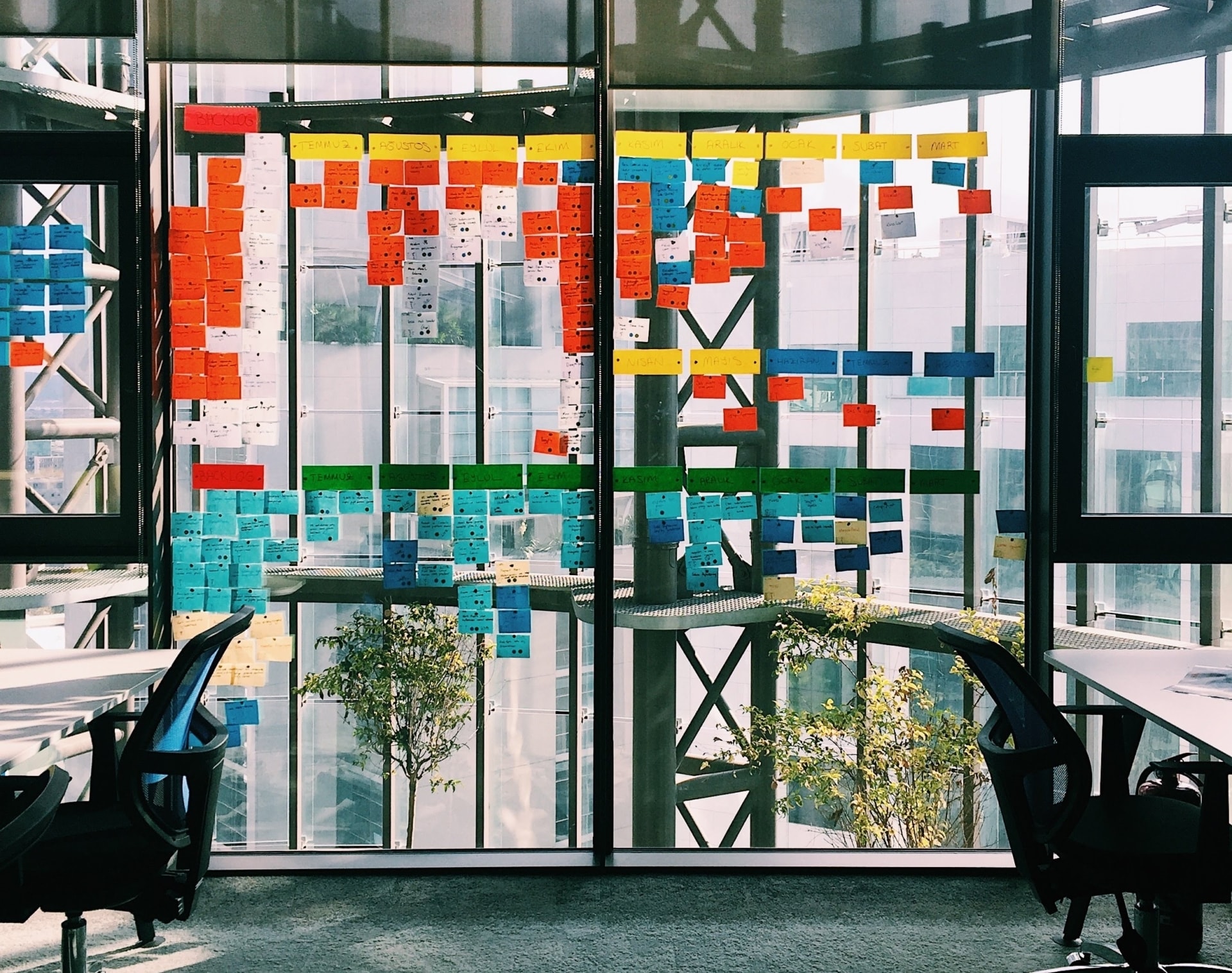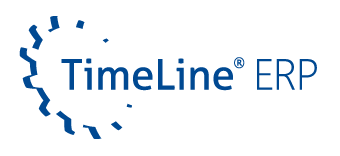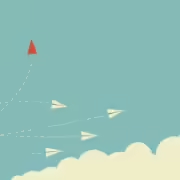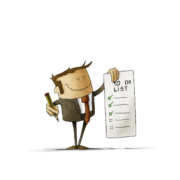Pros and cons of the most popular Enterprise Resource Planning models
Implementing Enterprise Resource Planning (ERP) software usually requires a lot of resources and time, which is nothing new. This is not surprising, however, when you consider how closely the system is intertwined with your own processes. Organizing the project well in advance makes everyone’s job easier and helps avoid costly adjustments later on. This includes deciding on a process for integrating the new software. Even before the actual project begins, the customer and the ERP provider must ask themselves which approach will make the implementation the quickest and most efficient. There are two very contrasting Enterprise Resource Planning models that continue to enjoy great popularity – the waterfall method and the agile approach.
In the spirit of “old brooms sweep better”, most companies rely on the classic and proven waterfall method. Although more and more customers are interested in agile development methods, only a few are confident enough to implement the new ERP system using this concept. Many managers are still skeptical and unwilling to give up some of their control. This may raise some questions: What is the difference between these two approaches? Which one is better suited to my organization’s needs? This article will give you an overview of the two methods, their pros and cons, and hopefully make your decision a little easier.
The classic approach – the waterfall method
The waterfall approach is the typical Enterprise Resource Planning model. It has long been the standard, especially in the software industry. The first formal description of this model is attributed to Winston W. Royce. In his article “Managing the Development of large Software Systems”, published in 1970, he did not use the term “waterfall”, but made it clear even then that this method could be extended and was not suitable for every project. The waterfall method is characterized by a strictly linear project process. At the beginning, the course is defined by dividing the project into several phases. These phases are then consistently worked through in a predetermined order. Once a phase has been completed, the customer and vendor review and approve the results. Each completed phase initiates a new phase and is considered unchangeable; subsequent changes are generally not contemplated. Decisions cannot and should not be reversed.
There are several variations, but the basic waterfall ERP model consists of the following six steps:
- Requirements Analysis: definition of intended functionality
- Design: development of the software architecture
- Implementation: development and integration of the software
- Integration testing: finding and fixing bugs
- Rollout: putting the system into operation
- Support: making sure the customer has no problems with the product
The customer’s business objectives and requirements for the ERP system are set out in a requirement specification that defines how they will be implemented. The actual implementation varies from vendor to vendor.
Strengths of the waterfall method
The waterfall method is still very popular. Not without reason, as it provides clear and orderly structures, which is very important for some entrepreneurs. The implementation of ERP software is a major change, and planning and structure provide a little more security during this time and are therefore welcome. By the end of the preparation phase at the latest, everyone involved in the project will have a clear idea of what steps need to be taken before the actual launch, what stage of implementation you are at, and what lies ahead. Planning and calculating the budget and time required, especially for very large projects, is of course very precise.
Weaknesses of the waterfall model
However, the waterfall method also carries some risks that should not be underestimated, especially in the case of tricky and confusing ERP implementations. Ironically, the strictly linear approach often leads to a loss of control. The design effort for this method is usually very high, as each step must be planned in great detail. Since the phases are strictly separated from each other, you are tied to the predefined processes. This makes it very rigid and inflexible, making parallel work almost impossible.
The biggest weakness here is that mistakes or misunderstandings that occur at the beginning of the design phase only become apparent at the end of the implementation or, even worse, during functional testing. It is also possible that a use case is completely forgotten during the design phase. In this case, the ERP system will not take it into account. In both cases, this results in unplanned and costly additional work. On the other hand, due to a lack of communication, the vendor may implement unnecessary modules or functions that are never used in practice. In general, the limited communication in this method is often a reason for misunderstandings, as the customer and the ERP provider have different interpretations of the concept. The result: the customer is dissatisfied because the system does not meet his expectations. Obviously, this is a situation that should be avoided at all costs.
Agile development methods
Agile approaches were developed in response to the weaknesses of the waterfall method. One of the first variations of this method was Scrum. Scrum is a process model for project and product management, especially for agile software technology. The origin of this approach goes back to the article “The New New Product Development Game” in the Harvard Business Review in 1986. Among other things, Takeuchi and Nonaka emphasize the importance of self-organized teams in the entire development process. Today, this relatively new approach is mainly used in software development, but is also applied in many other fields.

According to this method, tasks are not implemented according to a linear plan, but in short implementation cycles called sprints. Goals are set at the beginning of each sprint. As the project progresses, the project team fully implements a work package, usually a functional requirement, in each cycle. This is then tested to produce an executable, presentable subsystem at the end of each cycle. This allows the customer to provide feedback at any time. Ideally, a cycle lasts two to four weeks. With each subsequent cycle, the project team and the user try to improve the requirements and gradually approach an optimal solution. This approach allows plenty of room for interaction, adjustments, and updates. This is especially helpful if the customer’s requirements for the software change during the implementation, or if other challenges arise.
The agile approach is as follows:
- Sprint 1 (design, implementation, testing, documentation, evaluation)
- Sprint 2 (design, implementation, testing, documentation, evaluation)
- Sprint 3 (design, implementation, testing, documentation, evaluation)
Strengths of the agile approach
A key advantage of the agile approach is that it is flexible and practical in its implementation, with a clear focus on communication and customer satisfaction. The project team and the customer or future users of the system work closely together from the beginning. The users are involved in each cycle and see individual areas of the system in action at an early stage, as a working subsystem is created after each cycle. This means that the software can be put through its paces during the implementation phase.
Errors in the design are quickly detected, and the customer can quickly see whether the software meets his real expectations and requirements. It is also much easier to avoid misunderstandings. The project team can directly implement feedback from the customer and use the new knowledge to adapt the process if necessary. Above all, the agile approach prevents the project from ending in an expensive customization marathon. It also increases user acceptance because employees can influence the project through continuous involvement and thus identify more strongly with the system.
Weaknesses of the agile approach
Even though this method has more advantages than disadvantages, it is not suitable for every company. In order to implement an ERP system in an agile manner, management must give up some control, as the agile approach is not based on fixed project plans and schedules. In addition, some planning certainty is always lost, as it is never possible to say in advance exactly when which function will be ready and operational and what the expected outcome will be.
Agile vs. waterfall: key differences in ERP models
Both approaches have the same goal, but follow different procedures. Here are the main differences:
Waterfall method
- Classic approach, long the standard in the ERP industry
- Linear approach
- The project is divided into phases, which are worked through one after the other
- Project results are presented at the end
- The process and concept of the project are defined at the beginning and are generally not changed
- Once phases are completed, they are not changed
- The deliverables are known and the scope is clearly defined
- The customer has clear requirements that change little or not at all
- The project has a relatively short duration
- The customer wants to be minimally involved in the process
Advantages
- High planning reliability
- Budget, current status and next steps up to actual launch are known at all times
- Planned timeframe is easier to meet due to clear and organized structures
Disadvantages
- Relatively rigid and inflexible to change
- Costly adjustments are often necessary because errors made during the design phase are not discovered until the end
- High design effort
- Each step must be planned in great detail
Agile approach
- Alternative to Waterfall
- Linear processes are replaced by cycles (called sprints).
- In each cycle, a work package, usually a functional requirement, is fully implemented and tested to create an executable subsystem.
- The project process is flexible.
- Planning and design are not rigid, but evolve as the project progresses.
- Partial results are adapted based on user feedback
- The scope is rather unknown, the scope is variable
- The project has a relatively long duration
- Requirements are unclear and many adjustments are expected
- Customer wants to be heavily involved in the process
Advantages
- Flexible and very practical
- Focus on communication and customer satisfaction
- Joint learning process
- Close collaboration between customer and ERP vendor
- Fewer delays and rework
- Faster detection of design flaws through testing after each cycle
- Increased user acceptance because employees are constantly involved in the project and can influence the processes
Disadvantages
- Managers have to give up some control
- Some planning reliability is lost because it is never completely clear when which feature will be ready
Which Enterprise Resource Planning model is best for my needs?
Which method is best for you and your organization depends on many factors and cannot be answered per se. Unfortunately, there is no universal solution that works equally well for all organizations. The waterfall method is more often used in companies with hierarchical structures, where planning security, control and orderly structures are a priority. Customers who like to have an overview of the company’s workflows and processes are more likely to choose this method. These are often projects with constant requirements. Projects with many unpredictable factors that require flexible adjustments tend to be unsuitable for this method.
The following questions can help you decide which approach is right for you:
- Can the goals be clearly defined in advance?
- Does the customer have clear expectations?
- Does the project team need a clear leadership structure?
- Is there a deadline or clearly defined milestones?
- Is the budget clearly defined?
- Are no major changes expected during the course of the project?
If you answered “yes” to most of these questions, the waterfall method is probably better for you. Agile development methods, on the other hand, can be an approach if the customer does not yet have a precise idea of what exactly they want. This method is particularly interesting for companies where the project is likely to last a long time and where conditions, wishes or priorities are likely to change over time. Organizations often choose a combination of the two Enterprise Resource Planning models. These hybrid approaches combine elements of both. For example, you might want to create a long-term plan based on the waterfall approach, but without strictly separating the phases – a mix of planning certainty and flexibility.
In any case, it is worth taking a closer look at both methods, as they both have their pros and cons. It is best to spend some time researching and working with your ERP vendor to determine which model best suits your needs.
If you would like to learn more about the the different Enterprise Resource Planning models for your ERP implementation, or the full range of TimeLine ERP features, please send us a message using the contact form, write to [email protected], or contact our sales team at +49 212 230 35 200. We look forward to hearing from you and will be happy to advise you!







